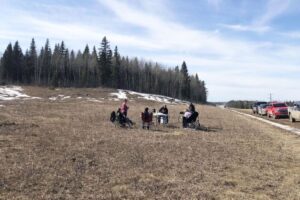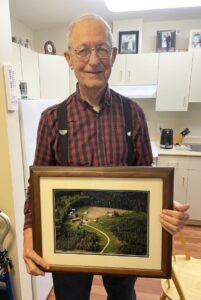By Brittany DaSilva
Mars City Design connects scientists, engineers, and other professionals who are interested not only in simply exploring Mars, but who are passionate about making Mars a habitable planet for humans. Since 2016, the Mars City Design challenges have encouraged individuals and teams to submit designs that will contribute to the building of sustainable cities on Mars.
Winners are awarded each year for the most impressive designs in various categories, including: architecture, transportation, artificial intelligence (AI), sustainable energy, and experimental interior design. A team from Massachusetts Institute of Technology (MIT) won the 2017 Mars City Design competition in the architecture category, with their design entitled Redwood Forest.
The design submitted by Valentina Sumini, and the MIT Redwood Forest is comprised of a series of domes that will house up to 50 people each. The domes will be interconnected, creating a community of 10,000 people. Each dome contains its own habitat, made up of trees, plants, water, and animals.
As sustainability is a major component of the Mars City Design competition, the team from MIT ensured that their design incorporated the natural resources found on Mars. Ice, water, soil, and sun are all natural resources that are vital to the overall success of the Redwood Forest.
The habitats located within these domes will be connected to the other domes within the community through a series of underground tunnels, or roots. These tunnels will allow the residents of each dome to visit the other domes, but will also provide shelter in the event that individuals require protection from external threats such as cosmic radiation, micrometeorite impacts, or extreme thermal variations.
As natural resources are critical to the success of such projects, it is imperative that scientists definitively find sources of liquid water on Mars, before any building can take place. The water sources discovered thus far appear to be salt water, and are very limited in supply. At this stage, many of the designs submitted to the Mars City Design competition, including Redwood Forest, require water and ice harvested from the northern plains of Mars.
Particularly in the case of Redwood Forest, water is used to fill soft cells located within each dome. This will offer residents protection from radiation, will help manage heat loads, and will supply the hydroponic farms that harvest the greenery and fish populations required for human survival.
Ultimately, NASA’s goal is to send humans to Mars by the 2030s, allowing scientists more time to explore and study the Red Planet and its resources. With concepts such as the Redwood Forest, Mars City Design hopes that humans will not only survive on Mars, but will comfortably thrive within these sustainable city environments in the future.







More Stories
Rising tariffs, skyrocketing duties and an Albertan forestry industry in need of support at home